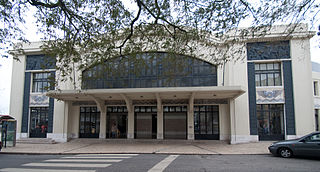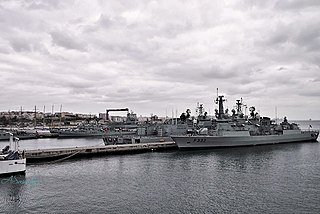
Seixal is a Portuguese city and municipality, located in the district of Setúbal, in the metropolitan area of Lisbon. Its population includes 184,269 inhabitants (2011), in an area of 93.58 square kilometres (36.13 sq mi) that includes six parishes. It is situated across the Tagus River estuary from Lisbon. Its seat is the city of Seixal, a centre of 31,600 inhabitants situated along the Rio Judeu.

Almada is a city and a municipality in Portugal, located on the southern margin of the Tagus River, on the opposite side of the river from Lisbon. The two cities are connected by the 25 de Abril Bridge. The population of the municipality in 2011 was 174,030, in an area of 70.21 km2. The urbanized core center, the city of Almada proper, had a population of 101,500 in 2001. It makes part of the Lisbon Metropolitan Area.

Belver is a Portuguese civil parish in the municipality of Gavião, district of Portalegre. The population in 2011 was 684, in an area of 69.84 km2. It is situated along the northern bank of the Tagus River.

The 25 de Abril Bridge is a suspension bridge connecting the city of Lisbon, capital of Portugal, to the municipality of Almada on the left (south) bank of the Tagus River. It has a main span length of 1,013 metres (3,323 ft), making it the 48th longest suspension bridge in the world.

Belém is a freguesia and district of Lisbon, the capital of Portugal. Belém is located in western Lisbon, to the west of Ajuda and Alcântara and directly east of Lisbon's border with Oeiras. Belém is famous as a museum district, as the home of many of the most notable monuments of Lisbon and Portugal alike, such as the Belém Tower, the Jerónimos Monastery, the Padrão dos Descobrimentos, and Belém Palace. The population in 2011 was 16,528.
Caparica is a former civil parish in the municipality (concelho) of Almada, Lisbon metropolitan area, Portugal. In 2013, the parish merged with the civil parish of Trafaria into the new parish Caparica e Trafaria. The population in 2011 was 20,454, in an area of 11.02 km2.
Cova da Piedade is a former civil parish in the municipality of Almada, Lisbon metropolitan area, Portugal. In 2013, the parish merged into the new parish Almada, Cova da Piedade, Pragal e Cacilhas. The population in 2011 was 19,904, in an area of 1.42 km2. The parish was founded on February 7, 1928.
Pragal is a former civil parish in the municipality of Almada, Lisbon metropolitan area, Portugal. In 2013, the parish merged into the new parish Almada, Cova da Piedade, Pragal e Cacilhas. The population in 2011 was 7,156, in an area of 2.27 km2.

The Sanctuary of Christ the King is a Catholic monument and shrine dedicated to the Sacred Heart of Jesus Christ overlooking the city of Lisbon situated in Almada, in Portugal. It was inspired by the Christ the Redeemer statue of Rio de Janeiro, in Brazil, after the Cardinal Patriarch of Lisbon visited that monument. The project was inaugurated on 17 May 1959. The giant statue was erected to express gratitude because the Portuguese were spared the direct destructive effects of World War II.

Amora is a city and civil parish in the municipality of Seixal in the district of Setúbal, Portugal. It is part of the Lisbon metropolitan area. The population in 2011 was 48,629, in an area of 24.36 km2.

The Cais do Sodré Railway Station is an intermodal railway station in the civil parish of Misericórdia, in the municipality of Lisbon, serving as the terminus of the suburban route to the resort town Cascais.

Transtejo & Soflusa is a public ferry company operating between Lisbon, on the right (north) bank of the Tagus River, to the left (south) bank of the river at Trafaria, Porto Brandão, Cacilhas (Almada), Seixal, Barreiro and Montijo.

The Metro Transportes Sul do Tejo is a light rail system that provides the Almada and Seixal municipalities, Portugal with mass-transit services.

Dom Fernando II e Glória is a wooden-hulled, 50-gun frigate of the Portuguese Navy. She was launched in 1843 and made her maiden voyage in 1845. Built at the shipyard of Daman in Portuguese India, it was Portugal's last sailing warship to be built and also the last ship that undertook the Carreira da Índia, a regular military line that connected Portugal to its colonies in India since the beginning of the 16th century.

The Lisbon Naval Base, is the main installation and operational base of the Portuguese Navy. Located at the former Royal Estate of Alfeite on the south bank of the Tagus river's estuary, near the city of Almada, the installation is sometimes referred to as the Alfeite Naval Base.

The history of rail transport in Portugal dates from 28 October 1856, when Portugal's first railway line was opened between Lisbon and Carregado: the Companhia dos Caminhos de Ferro Portugueses.

The Castle of Almada is a medieval castle located in the civil parish of Almada, Cova da Piedade, Pragal e Cacilhas, in the municipality of Almada, Portuguese Setúbal.

The Fort of São Lourenço do Bugio, also known as the fort of São Lourenço da Cabeça Seca or simply Torre do Bugio, is located in the middle of the estuary of the river Tagus, near Lisbon in Portugal. With no further need for its military functions, it is presently a lighthouse. The fort's location is on a sandbank formed by the silting of the river mouth, the result of the meeting of the river's waters with those of the Atlantic Ocean. Being the only sandbar of the Tagus river with its surface above the tide throughout the year, it was given the name “dry head”. The derivation of the name “Bugio” (monkey) is uncertain but may be related to the French word for candle, “bougie”, due to the similarity of the fort's structure with a candle on a candlestick.

The Cacilhas Lighthouse is situated in the parish of Cacilhas, in the municipality of Almada, on the opposite side of the Tagus River from the Portuguese capital of Lisbon. Although not functioning, it was restored in 2009 as it is considered to be an important part of the area's heritage.
The Fort of Trafaria is a fort in Portugal. Dating back to 1683, it has never been used in battle.






















